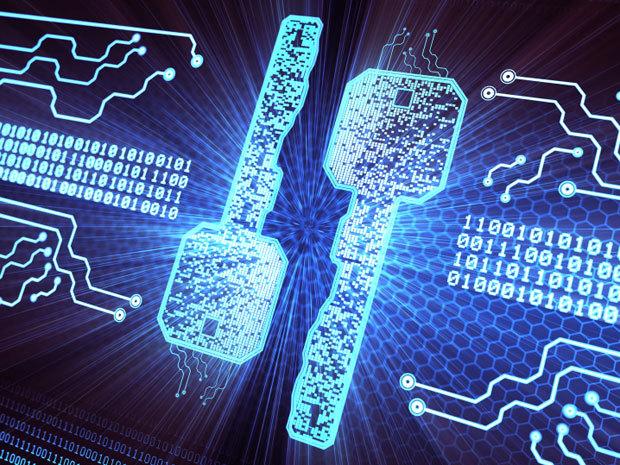

Pranav Gani
Class of 2023Ooltewah, TN
About
Hello! My name is Pranav Gani and my Polygence project is on quantum computing and its impact on artificial intelligence. I want to study how quantum superposition enhances artificial intelligence technologies and how computer languages like Python are used in these processes. I chose to work on this project because I am thrilled with the combination of subjects like physics and computer science. I strongly believe that this research will provide me with foundational knowledge that I can use throughout college and beyond. After my project is complete, I would like to submit it to an academic journal and present my findings to an academic group if possible.Projects
- "Securing Quantum Computers: Safeguarding Against Eavesdropping and Side-Channel Attacks" with mentor Ross (Oct. 4, 2023)
Project Portfolio
Securing Quantum Computers: Safeguarding Against Eavesdropping and Side-Channel Attacks
Started Apr. 25, 2023

Abstract or project description
The Mirai Botnet and the Dyn Attack are ideal examples of malicious activities. The Mirai Botnet is a malware that targets smart devices like cameras and routers. This malware is a type of botnet which converts devices to a zombie network of remote-controlled bots. Meanwhile, the Dyn attack is an example of a Denial-of-Service attack (DDoS). The attacker causes a network resource to be unavailable for its users by disrupting the services of a host connected to a network. Such threats pose a risk to data protection and confidentiality in many IoT applications. Data breaches, data authentication, and Side-Channel Attacks have arisen in systems impacted by viral entities. Quantum Computers have the ability to combat such effects. Due to key-properties such as quantum entanglement and photon polarization, eavesdropping and other malicious activities are more detectable. Quantum systems enable efficient and secure data transmission to take place. To successfully prevent malicious activities, comprehending the differences between classical and quantum computers and understanding the applications of Quantum Key Distribution" are essential first-steps in reducing the probability of eavesdropping and Side-Channel Activities.
Quantum computers transmit information through photons, particles of light, and the basic unit of information is stored in a qubit, which can accommodate both states of 1 and 0. On the other hand, classical computers utilize binary methods, where a bit represents either a 1 or a 0. Moreover, classical algorithms like the Rivest-Shamir-Adleman Algorithm (RSA) depend on random number generation, which helps generate public and private keys. These keys are used for encrypting and decrypting data. However, since the RSA algorithm is an asymmetric algorithm, an algorithm that utilizes a public and private key, a third party platform is required to confirm the validity of a public key and decryption requires extensive processing by the receiver. Therefore, data transfer and processing is slow. In order to combat this limitation, usage of quantum technology and computers is necessary to advance efficiency and security. Quantum Algorithms like Shor's Algorithm implement the properties of quantum physics and portray how quantum technology accomplishes complex tasks in an instant, which might take an exponential time for classical computers.
Quantum computers exhibit efficiency by working with photons and by following the principle of quantum entanglement. The entanglement property indicates that a change in the state of a photon signals the change in state of another photon, which makes it visible to detect malicious entities. Specifically, when utilizing Quantum Key Distribution (QKD) and cryptography protocols like Charles Bennett and Gilles Brassard’s protocol in 1984 (BB84), the probability of malicious activities is further reduced. Quantum cryptography’s QKD technology is a symmetric single key encryption technology that allows two users to share a secret cryptographic key which is encrypted in an algorithm called block cipher. This key is secure and private. Single key encryption helps protect data more efficiently against attackers and foreign adversaries compared to public key encryption as the latter process involves the risk of losing the private key, and thus losing the ability to decrypt messages.
Even though quantum computers seem to address possible threats, the threat of Side-Channel Attacks is still prevalent. Side-Channel Attacks are physical attacks on the cryptosystem that influence how the algorithms are implemented and how the programs are executed. Side-Channel Attacks aim to attack the hardware and use power consumption, electromagnetic radiation, and sound emissions to indirectly extract information from the system. Eavesdroppers may still obtain the secret-key bits by utilizing the imperfections of QKD technology. For example, a time shift attack was conducted in 2007 with the help of a detection efficiency loophole. Through this attack, a commercial BB84 system was hacked as the eavesdropper controlled the receiver’s single photon detector by inputting tailored bright illumination. It was also understood that the receiver’s choice of measurements can be predetermined by an eavesdropper since the reflection to transmission ratio was dependent on wave-length frequencies.
Considering the advantages and limitations of quantum computer security, we present an overview of the terminologies and concepts surrounding quantum security. Furthermore, taking into account the ongoing effects of Side-Channel Attacks, this study aims to introduce the foundational concepts and theories relevant to eavesdropping and Side-Channel Attacks for the purpose of efficient quantum computer security.